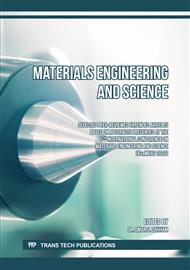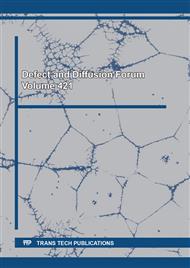p.15
p.21
p.27
p.45
p.53
p.63
p.75
p.83
p.91
Optimization of CO2 Laser Parameters for Hole Micro Drilling of PMMA: An Experimental and Theoretical Study
Abstract:
Motivated by a desire to improve hole quality during drilling Polymethyl methacrylate (PMMA) samples using a continuous CO2 laser. This research presents a theoretical and experimental investigation to optimize input parameters of laser drilling such as laser power and exposure time for different thicknesses 1-3 (mm). Hole quality characteristics such as depth, inlet diameter, and heat affected zone (HAZ) were considered process results and examined with a microscope. Design Expert software has been used to get a detailed understanding of a laser drilling process owing to the confluence of multiple factors that impacts the results. depending on the Box Behnken Design (BBD) of tests software; 17 experiments were applied to explore the effect of laser factors on the micro-hole drilling process. Statistical analysis technique (ANOVA) was used to study the influence of laser drilling process factors including power, exposure time of different thicknesses on HAZ, depth, and entrance diameter. Quadratic regression models were employed to model the processing of many hole variables. Experiments were optimized using the defined goal model as a function to get the optimal hole. The data received were confirmed using verification tests, and a considerable increase in hole quality was realized. The proposed technique is perfect for reducing the HAZ and entrance hole diameter for the ideal depth hole. The laser parameters were changed in different combinations of 2-6 (W) power and 0.1- 0.3 (s) exposure duration, on the various thickness. The obtained values indicated that raising the drilling parameters increases the depth, entrance diameter, and HAZ. The sample thickness has a great impact on hole characteristics; increasing the sample thickness reduces the inlet diameter, and heat-affected zone (HAZ); increasing the thickness leads to an increase in hole depth. The results showed that the highest depth of 1mm thick was 0.99(mm) with 437(µm) diameter and 85(µm) HAZ. 1.9(mm) depth with 435(µm) diameter and 32(µm) HAZ was obtained at 4.99(W) and 0.1(s) on 2(mm) thickness. while as in 3(mm) thick, depth is equal to 2.8(mm), 472(µm) diameter, and 20(µm) HAZ was attained. COMSOL Multiphysics 5.6 software was used to apply virtual experiments and obtain the ideal conditions from the parameters' combination that improves the quality of the hole, which is the main goal of this research. Which is in good agreement with the test results. The findings and procedure of this research have not been presented elsewhere.
Info:
Periodical:
Pages:
53-62
Citation:
Online since:
December 2022
Keywords:
Price:
Сopyright:
© 2022 Trans Tech Publications Ltd. All Rights Reserved
Share:
Citation:



